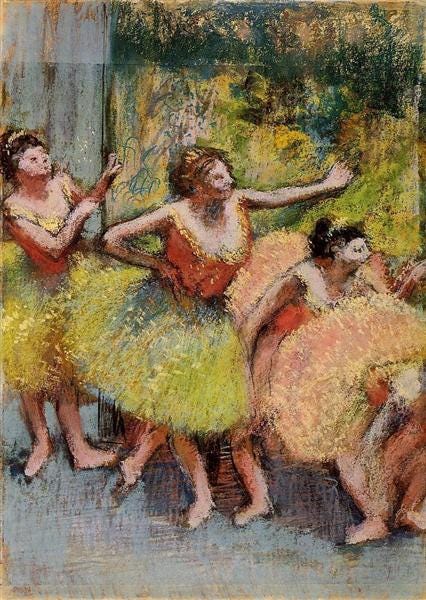The Art of Watching
What do you do when you're not dancing?
Take a dance class, and you’ll find that it is as much a lesson in the “art of moving” as it is a lesson in the “art of watching.”
Watching is, at its heart, learning. To watch is to learn. As you wait for your turn to do the step, it’s impossible not to look at the dancers in the center of the floor. Naturally, you will find your gaze turning to the “best” dancer, the dancer whose movement commands your attention the most. Perhaps something about their technique or style appeals to you, and you take mental note. That’s how it works for me at least.
As you watch and identify the bits that you appreciate in other dancers, you think about how to apply these things to your own self. Because of your own physical and technical limitations, it’s not enough to just copy other people. You need to figure out how to “get there”— how to incorporate what you admire into the form of your own body. This is the process of self-improvement, without the aid of personalized instruction from a teacher. It’s very democratic.
And when you dance, you also watch. The mirror is the most instantaneous tool of feedback. Do you like what you see? If not, what happens when you try to fix it? This loop can be quite addictive. Everyone has their own relationship with their reflection; dancers, at the very least, must be comfortable with looking at themselves.
Seeing other people dance, seeing yourself dance— these two activities in concert make up the core of “taking a dance class.” And paired together, they provide an effective way of making progress, best harnessed through one’s skill in observation. Never stop watching!


